Overview
Historically, most buildings in Colorado have been heated by natural gas due to the cold winters, available technology, and relatively low cost of natural gas. Any cooling needs have been met by separate equipment—predominantly refrigerant-based or evaporative cooling. In the last two decades, efficient electric heating and cooling technology has improved significantly. Today, there are heat pump products that can reliably provide electric heating and cooling in all Colorado climate zones.
Heat pump technology is fundamentally different from traditional natural gas-fired heating systems. Terminology, design strategies, and installation methods are different from traditional gas-fired systems, and sometimes more complex. At the same time, projects that succeed in executing an efficient, all-electric design can reap substantial benefits, including:
-
Financial incentives
-
Tax credits
-
Utility rebates
-
Municipal funding (location dependent)
-
Low-carbon-emission buildings
-
Health benefits to residents
-
Competitive Housing Tax Credit applications
-
Compliance with building performance standards
Technology and Design
Conventional heating equipment converts fuel directly to heat by burning natural gas or powering electric resistance coils. A heat pump acts more like a typical air conditioner, using electricity to move heat from one place to another. Conventional cooling uses the refrigerant cycle to remove energy from indoor air and transfer it outside via an air conditioning condensing unit. A heat pump operates in the same way, but also has the capability to take energy from the outside air (or some other source) and move that heat into the building.
This Old House has a great video breaking down how a heat pump works.
Because heat pumps transfer heat instead of generating it, this technology is highly efficient. While gas-fired or electric resistance heating is 80 to 100% efficient, heat pumps can operate at 300 to 500% percent efficiency. Operating at 300% percent efficiency means that for every one kilowatt-hour (kWh) of energy consumed, the system moves three kWh of heat from the source into the building.
Types of Heat Pumps
Individual In-unit Systems
Heat pumps seen in affordable housing rental units are commonly either individually packaged equipment or split systems. Packaged systems, such as packaged terminal heat pumps and vertical terminal heat pumps, have the benefit of lower first costs and easy installation. Split systems, while more costly upfront, generally offer improved energy performance, air quality, and occupant comfort.
Comparison of Typical Heat Pump Terminal Equipment: Packaged vs. Split
| Pros | Cons |
|
|
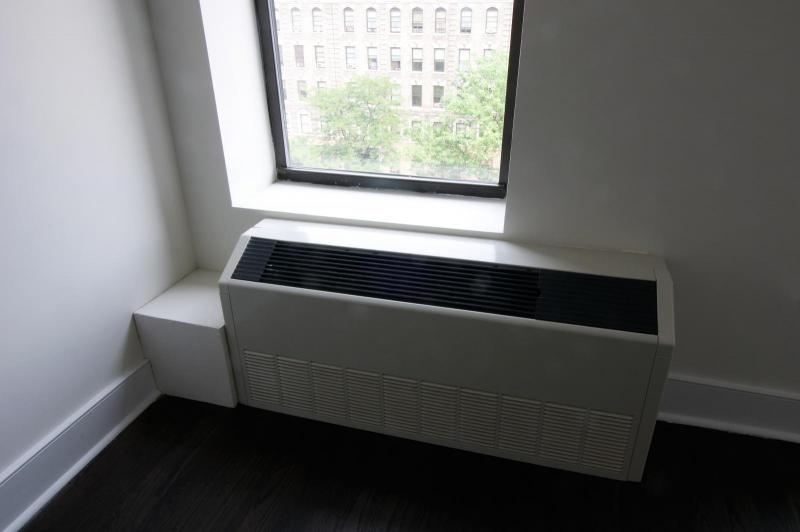
|
|
Packaged terminal heat pump
|
Design Considerations
- Many standard packaged system options do not meet the energy performance requirements of advanced energy standards.
- May need to be paired with an energy recovery ventilator (ERV) or solar to meet 2021 International Energy Conservation Code (IECC) performance code requirements
Best practice tip:
| Pros | Cons |
|
|
Design Considerations
- For ENERGY STAR, ZERH, or 2021 Residential IECC compliance, ducted systems will require duct leakage testing.
- Fan coil units are typically located in the bathroom, which may require additional space above the ceiling.
- Refrigerant line set lengths for heat pumps are less than standard direct expansion DX cooling line sets.
- For retrofit applications, the height of the building and distance to exterior units needs to be considered.
Best practice tip:
Many split heat pump models offer lower switchover temperatures than packaged systems. Look for models with switchover temperatures at 15 degrees Fahrenheit or below. Heat pump operation down to zero degrees Fahrenheit is ideal.
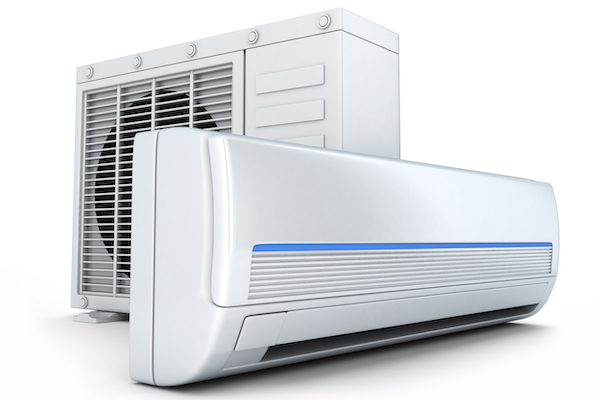
|
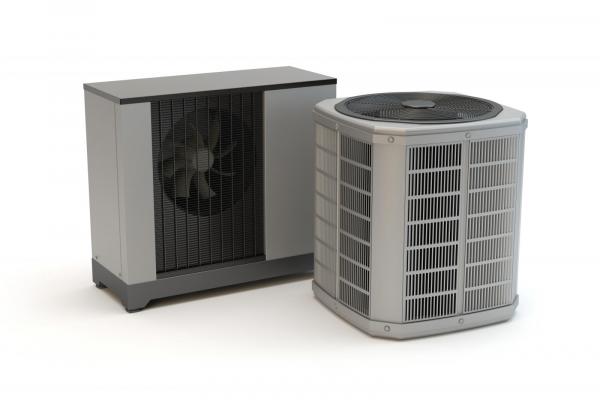
|
|
Ductless mini split heat pump and head
|
Outdoor split system heat pump unit
|
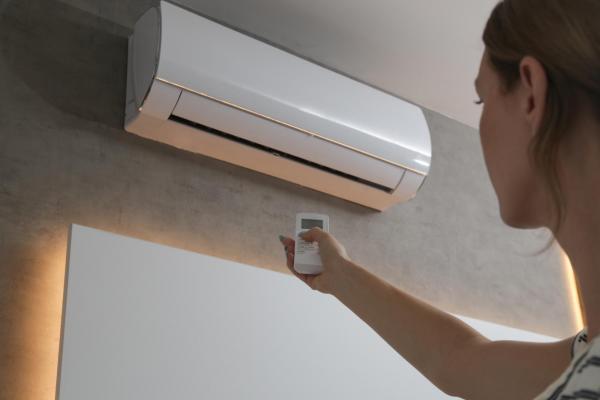
|

|
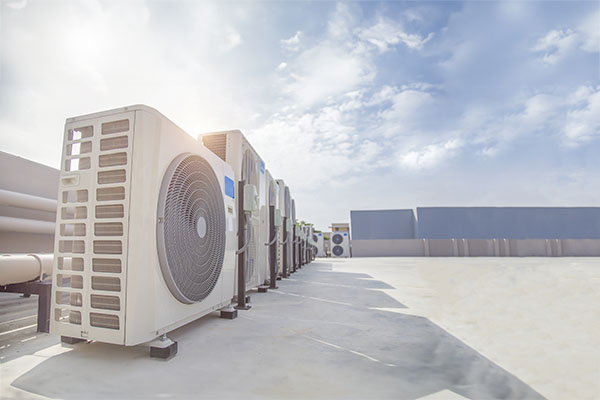
|
|
Ductless mini split heat pump head
|
Outdoor split system heat pump unit
|
Outdoor split system heat pump unit
|
Centralized Systems
Variable refrigerant (VRV/VRF) systems and ground-source heat pumps (GSHPs) are less commonly installed HVAC options in the Colorado affordable housing market. Both offer lower operating costs at a higher upfront cost.
-
GSHPs are best suited for projects that have a large site area with sufficient space to install ground loop piping. While more difficult to design correctly, GSHPs have the benefit of better cold weather performance and domestic hot water system integration opportunities.
-
VRV/VRF systems are best suited for larger projects with diverse loads, as these systems are better able to handle concurrent heating and cooling.
In addition to higher upfront cost, another all-electric centralized system challenge is a limited pool of knowledgeable design engineers, HVAC contractors, and maintenance personnel. Without relevant professional expertise, systems are more likely to be improperly designed, installed, or operated. This can lead to higher operating costs, early failure of equipment, or resident discomfort. For property management staff who are less familiar with central system operations and maintenance, there may also be a need for third-party service contracts.

|
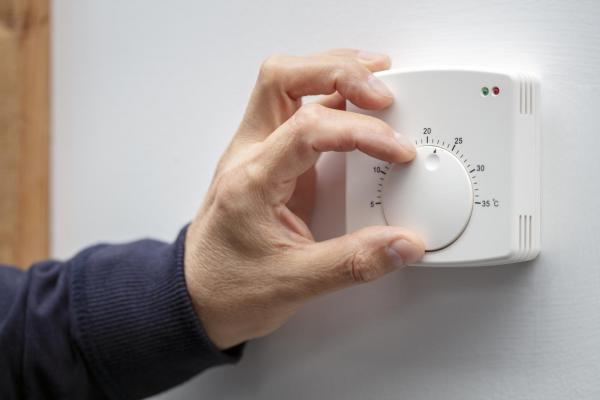
|
| Centralized system | Centralized system |
Retrofit Options
Ducted in-unit natural gas systems, like furnaces with exterior condensing units, can typically be retrofitted with split system heat pumps. Key retrofit concerns include building and apartment electrical service.
For existing projects without central ductwork, ductless mini-split systems can be a good choice for achieving high-efficiency electrification. The main advantages of mini-splits are their small size and flexibility for heating and cooling individual rooms. Ductless mini-split systems are also easier to install than some alternatives and offer interior design flexibility. The indoor air handlers can be suspended from a ceiling, mounted flush into a drop ceiling, or hung on a wall.

|
| Heat pump |
The change in operational costs will vary depending on the existing design and the energy performance of the new heat pump. For ductless systems, many manufacturers offer very high efficiencies that may substantially reduce operational costs compared to an electric heat baseboard system or be comparable to a hydronic gas baseboard system. For a ducted system, costs are more variable. As with any electric retrofit, residents will also benefit from improved indoor air by the removal of a combustion gas source. Maintenance efforts will be similar to traditional split system air conditioning units.
Heat Pump Efficiency and Terminology
-
Heating and cooling source
This describes the source from which the heat pump moves energy when heating and cooling the building. Most commonly this is “air-source,” which means energy is taken from the outside air and transferred to the building. There are also water-source heat pumps which transfer energy from water flowing through the heat pump to the air in the space. Ground-source heat pumps are a specific type of water-source heat pump that use long stretches of piping buried in the ground to heat and cool the water going to the heat pumps. -
Changeover temperature
Heat pump efficiency declines as the temperature of the source gets further from the temperature of the building. Eventually, a heat pump will stop operating when the temperature is so low that it can no longer remove energy without freezing the equipment. For this reason, heat pumps frequently have a backup heating source in very cold conditions—typically electric resistance heat, which is substantially less efficient. The changeover temperature is where a heat pump switches from “heat pump mode” to the less efficient “electric resistance mode.” In Colorado’s heating-dominated climate, the changeover temperature can have a significant impact on operational costs. A higher changeover temperature will lead to higher operating costs. -
Efficiency ratings
Heat pumps are typically rated by their Coefficient of Performance (COP) or the Heating Seasonal Performance Factor (HSPF). These are similar to the Energy Efficiency Ratio (EER) or Seasonal Energy Efficiency Ratio (SEER) ratings for cooling performance. -
Cold-climate heat pumps
Cold-climate, or low-ambient, heat pumps are designed to operate in heat pump mode at low temperatures (below freezing). This equipment can achieve the same transfer of heat from the outside to indoors, sometimes even when temperatures are as low as 20-below-zero degrees Fahrenheit. Less (or in some cases zero) electric resistance heating reduces operating cost compared to standard heat pump systems.
